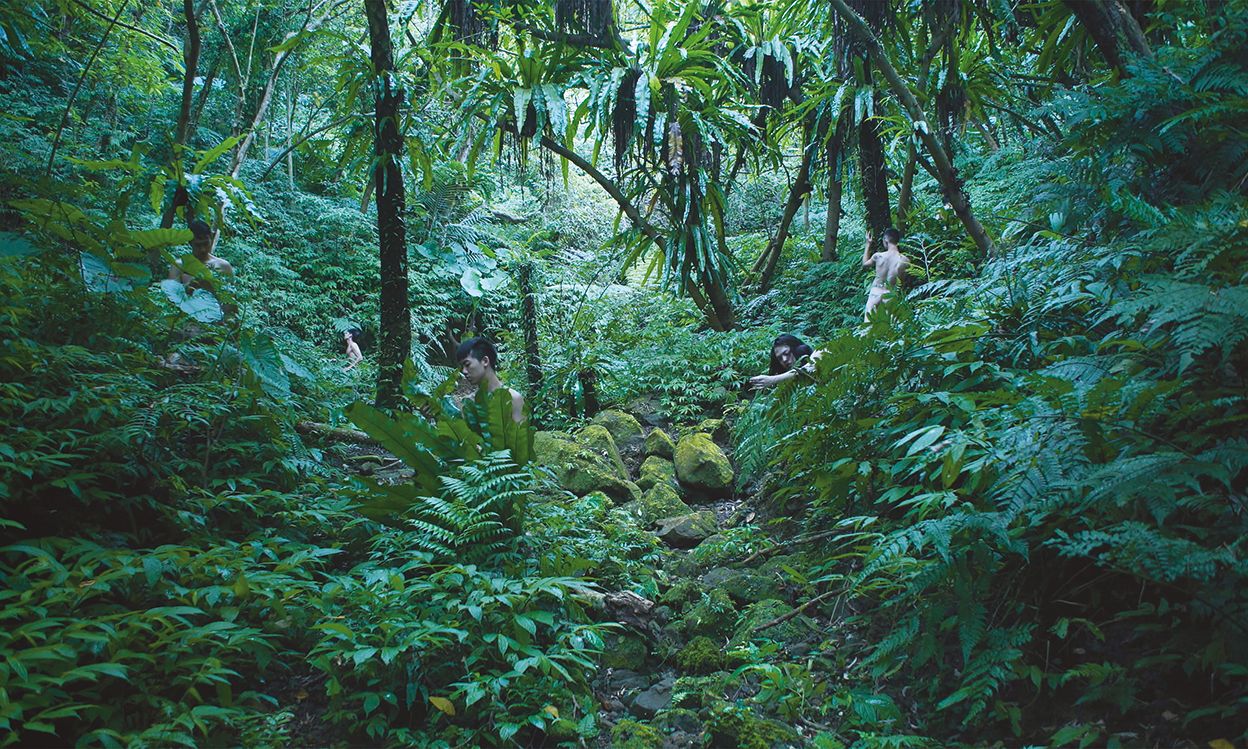A still from Zheng Bo’s video work Pteridophilia 1 (2016). The artist is one of five whose life stories and practices are explored in depth in the book Courtesy of the artist and Kiang Malingue (Hong Kong)
The Chinese journalist and lecturer Kejia Wu displays her deep knowledge of the Chinese art market in this new book. It offers a thorough, English-language analysis of the market, its origins, its extraordinary growth over the past 30 years and its uneasy relationship with official government policy. As a columnist for the Financial Times China and author of Tefaf’s China Art Market report in 2019, Wu is ideally placed to tell this story, and she does so in fascinating detail.
The book is divided into three sections. The first part traces how the art market rose, like a phoenix, from the devastation of the Cultural Revolution. As Wu remarks, even today this remains a sensitive, even taboo subject: “Most people do not want to mention what happened, let alone relive this period in great detail. This lack of information has resulted in the media and art critics enthusiastically writing about the miraculous rise of the Chinese art market, without closely examining how such a ‘fairytale’ could have happened in the first place.”
She digs deep into this “fairytale”, outlining the problems posed by the aftermath of the Cultural Revolution, the restitution of cultural objects that had been ransacked by the Red Guards and detailing some of the lawsuits brought by dispossessed collectors. She then explains how the two leading auction houses, Poly and China Guardian, came into being in the mid-1990s. Initially traditional art dominated, such as scrolls, ceramics and bronzes.
Fast forward to the early 2000s, when contemporary art really entered the scene. Galleries were set up in the 798 district in Beijing, Sotheby’s Hong Kong created a new stand-alone category for Chinese contemporary art, Western galleries started opening on the mainland and private museums were established. And then Art Basel powered into Hong Kong, buying up the initial Art HK fair in 2011 and transforming the territory as the Asian destination for contemporary art. Wu rounds off her analysis of the market with a section boldly predicting the future—from the buying behaviour of wealthy young Asians to the likelihood of private museums being able to sustain their ambitions.
What is particularly interesting in this section is the number of interviewees, which range from established dealers such as Lorenz Helbling to collectors including Jenny Wang of Fosun, artists such as Zhang Xiaogang and Liu Xiaodong and auction house specialist Evelyn Lin.
The second section, entitled “The Paradox of Two Parallel Art Systems”, examines the complicated relationship between China wanting its culture to be used as “soft power” and its desire to control every aspect of people’s lives. “China is the only major art market in the world where an immense state-endorsed-and-censored art system and a significant market-oriented art system co-exist in parallel,” writes Wu. She explains how difficult it is for curators, art fair organisers and galleries to negotiate the censorship criteria, since these are “often more a concept than a strict set of written rules”. And she quotes the Chinese president Xi Jinping: “We must tell the world positive Chinese stories.” This of course may clash with what contemporary artists are trying to say in their art.
Finally, Wu tells the stories of five artists—Xu Bing, Li Songsong, Qiu Anxiong, Lu Yang and Zheng Bo—from three different generations, including those who lived through the traumas of the Cultural Revolution, showing how they have shaped their practices as a function of their environment. The story of Zheng Bo pulls together the different threads of the overall story including the influence of Western culture on Chinese creators as well as Zheng’s concerns with Taoism, of the ecology and the situation of migrant workers in Hong Kong, where he now resides. He was the only artist from China to be identified as one of the biggest biennial stars by Artnews at the Venice Biennial in 2022.
• Kejia Wu, A Modern History of China’s Art Market, Routledge, 280pp, 15 colour & b/w illustrations, £120/£34.99 (hb/pb), published 8 May
• Georgina Adam is art market editor-at-large at The Art Newspaper and a contributor to the Financial Times

